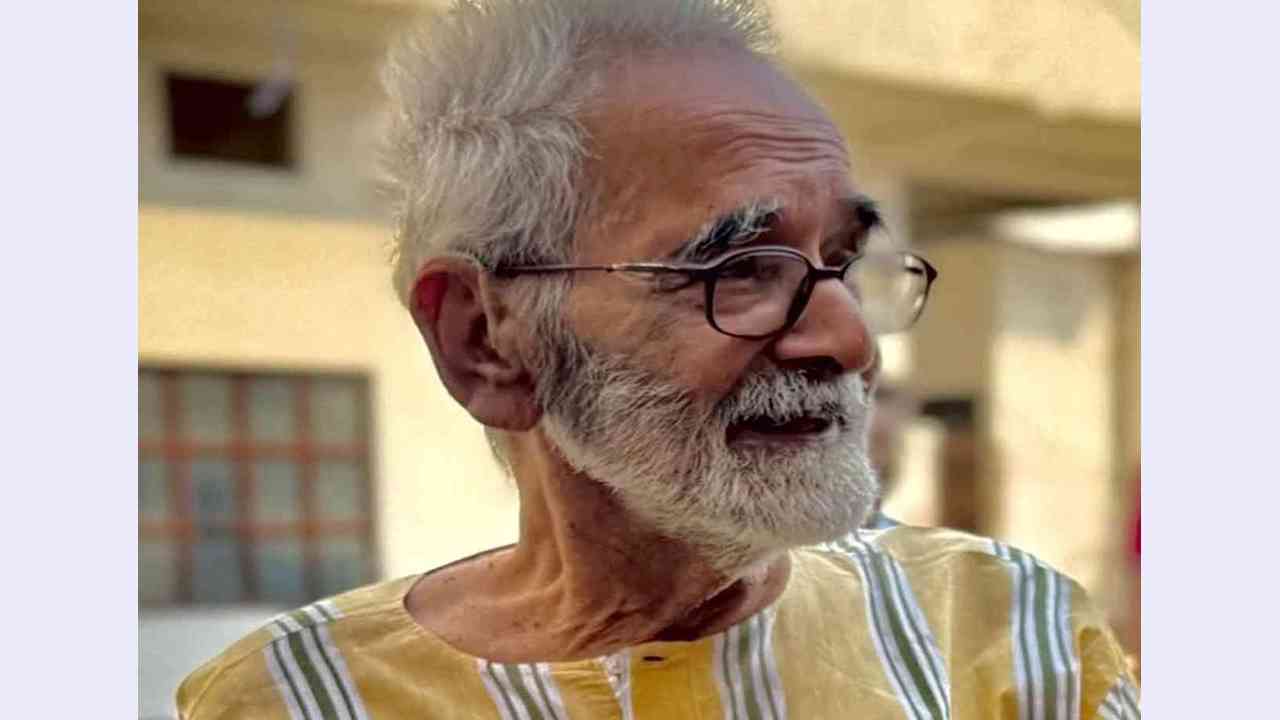(On 2 May, even as the country was dealing with the aftershock of the horrific terrorist attack in Pahalgam, PM Modi was joking in Kerala about opposition leaders losing their sleep. The occasion was the inauguration of the Vizhinjam International Deepwater Multipurpose Seaport, a PPP bonanza for the Adani group funded and facilitated mostly by the LDF government of Kerala. He made these remarks in the presence of Kerala CM and senior CPI(M) leader Pinarayi Vijayan, Congress MP from Thiruvananthapuram Shashi Tharoor and of course his dear friend Gautam Adani. Getting a CPI(M) led government to sponsor and celebrate the biggest Adani acquisition in India's trade and maritime economy is of course a matter of great satisfaction and glee for Modi, but since its inception the port has been mired in controversies and the fisherpeople and environmental activists of Kerala remain deeply concerned about the impact of the project on people's livelihood and environmental and climate stability. While most political leaders of Kerala cutting across their ideological divides are convinced that the port will boost the overall economic growth of Southern Kerala, fishing workers, environmental experts, and civil society organisations see it as a potential threat to the environment and coastal livelihoods.
A report by environmental journalist K A Shaji, whose documentary 'Stolen Shorelines' exposing the corporate role in aggravating climate-change induced coastal environmental crisis won wide critical acclaim. – Ed.)
The Rs. 8,800 crore seaport is being developed through a Public-Private Partnership (PPP) between the Kerala government and Adani Vizhinjam Port Private Ltd. (AVPPL), a subsidiary of the Ahmedabad-based Adani Group. The company secured the project bid five years ago. Although the port was originally scheduled for completion in 2018, it has faced multiple delays. Nonetheless, it is anticipated to become India's deepest port, capable of handling 80% of the country's transhipment cargo.
In addition to providing financial support, the Kerala government has contributed 360 acres of land to the project and allowed Adani to reclaim 130 acres from the sea. Experts warn that constructing the new seaport and its breakwater may exacerbate the ongoing large-scale coastal erosion, potentially displacing over three dozen fishing villages with over 7,000 families.
Both Adani Port and the Kerala government strongly deny allegations of coastal erosion and ecological damage. A compliance report for the seaport project, which covers the period from October 2019 to March 2020 and was issued by Adani Ports in consultation with the Kerala government, asserts that there is no shoreline degradation in the area, contrary to opponents' claims. However, visuals could challenge the validity of these assertions.
It has been less than two years since Kerala's then Fisheries Minister, J. Mercykutty Amma, acknowledged that the construction of the port breakwater had led to increased high tides and erosion along the Thiruvananthapuram coast. This warning has been echoed by experts and confirmed by coastal communities.
The total project cost of Vizhinjam port is Rs. 7,525 crore, with Adani’s investment amounting to Rs. 2,454 crore. The Union Government is contributing Rs. 1,635 crore as a viability gap fund, while the State government is investing Rs. 3,436 crore. According to the agreement, Adani will operate the port for 40 years, with the option to extend by an additional 20 years. The State government will only begin to receive a share of the revenue from the port after 15 years.
When the project was initially launched by the former UDF government in Kerala, led by Oommen Chandy in partnership with the Adani Group in 2015, the CPI (M) alleged that it involved corruption amounting to Rs. 6,000 crore. However, after assuming power in 2016, the party changed its stance. A 2017 report from the Controller and Auditor General (CAG) identified several inaccuracies in the project and predicted a substantial loss of Rs. 5,608 crore by the end of the 40-year concession period. The CAG also noted that the total project cost was unreasonably high compared to similar ports in other states.
Kerala is one of the country's coastal states, boasting a 590 km coastline, making it one of the world's most densely populated coastal regions. In the Thiruvananthapuram district, the coastal area stretches over 90 km, beginning at Edava and ending at Pozhiyoor. This high population density increases the vulnerability of coastal communities to natural disasters, such as tsunamis and cyclones.
Experts on coastal issues have indicated that coastal erosion in the Vizhinjam-Shanghumukham region will likely worsen in the coming years as the Adani port becomes fully operational.
The massive sea erosion propelled by the project is liable to turn severe in the coming years, and that could create challenges even for the local airport and several facilities of the Indian Space Research Organisation (ISRO) in Veli and nearby Thumba, which are all coastal hubs close to Vizhinjam. The experts argue that the environmental and livelihood impacts of the Vizhinjam international seaport project have not been assessed adequately or accurately till now. They claim that the port is irresponsibly located on the erosion-prone coast of Thiruvananthapuram. Research suggests that the coastline is not equipped to absorb the potential impacts resulting from the construction and operation of the Vizhinjam port.
In the neighbouring fishing villages of Vizhinjam, including Kovalam, Veli, Valiyathura, Kallumoodu, Bheemapalli, and Muttathara, hundreds of families connected to the fishing industry are currently staying in relief camps, as the sea has destroyed their homes, livelihoods, lands and belongings. Despite the much-publicised reopening of schools and colleges elsewhere, local schools and community centres in these areas still function as relief camps. With the rainy season extending and sea erosion increasing, more families of fish workers are expected to seek shelter in these camps in the coming days.
According to Vijayan Joseph, a local resident and former researcher with the International Ocean Institute, coastal erosion in the Thiruvananthapuram region began in the 1970s when a minor breakwater was constructed for the Vizhinjam fishing harbour.
However, the sea's encroachment has accelerated significantly since 2015, when construction commenced on the much-anticipated Vizhinjam International Deepwater Multipurpose Seaport.
The Kerala government has not only provided financial support for the development of the new seaport but has also contributed 360 acres of land to Adani and permitted Adani to reclaim 130 acres from the sea. However, experts caution that constructing the new seaport and its breakwater may exacerbate the existing problem of coastal erosion, which could potentially displace over three dozen fishing villages with over 7,000 families.
Both the fishing industry and the region's marine biodiversity have already been negatively impacted by the project. The situation will likely deteriorate further by the time the construction of the breakwater and quay walls for the port is completed. Experts warn that this construction poses a serious threat to the diverse marine life of the Wadge bank, located off the coast of Thiruvananthapuram. This area serves as a breeding ground for over 200 fish species and contains the largest coral reef in the Indian Ocean. The Wadge Bank is home to more than 60 species of ornamental fish and other oceanic animals. It also supports commercially important species such as squids, cuttlefish, carangids, tuna, anchovies, and lobsters. Despite its designation as a Protected Marine Area, the state government has decided to proceed with the project.
Over 50,000 fishing workers are being adversely affected by the Adani project in Vizhinjam. The project has destroyed breeding grounds, reduced fish catches, caused beach erosion, decreased access to fishing areas, and intensified conflicts with shipping vessels. Increased water turbidity from reclamation and dredging lowers fish catches by disrupting fish spawning and habitat sites. Fishing workers report that the dredging has led to habitat loss for several aquatic species, particularly mussels and lobsters. Of the 33 reefs near Vizhinjam, 15 have been destroyed, and 17 have been heavily damaged due to sand deposition from the dredging activities.
Many people consider sea erosion to be a natural phenomenon, believing that the sea will eventually deposit the sand and soil it has taken away back in the same place. However, visiting Pulluvila, located in the southern part of the Vizhinjam project, can challenge this belief. The shores north of the Adani project have lost sand and soil, which are not returning. Instead, this sediment is being deposited on the southern part of the project. This situation highlights the seriousness of the issue. Experts have long pointed out that seawalls and breakwaters disrupt the natural accumulation of sediments along the coast, preventing the shoreline from being replenished.
In September 2021, Adani Enterprises secured a 50-year lease to operate, manage, and develop the 89-year-old Thiruvananthapuram International Airport. This decision was made by the Union Cabinet and faced strong opposition from the Kerala government. Local residents express concerns that if coastal erosion continues, the sea could reach the airport. They also speculate that Adani could integrate the seaport and airport, potentially creating a unique collaboration worldwide.





